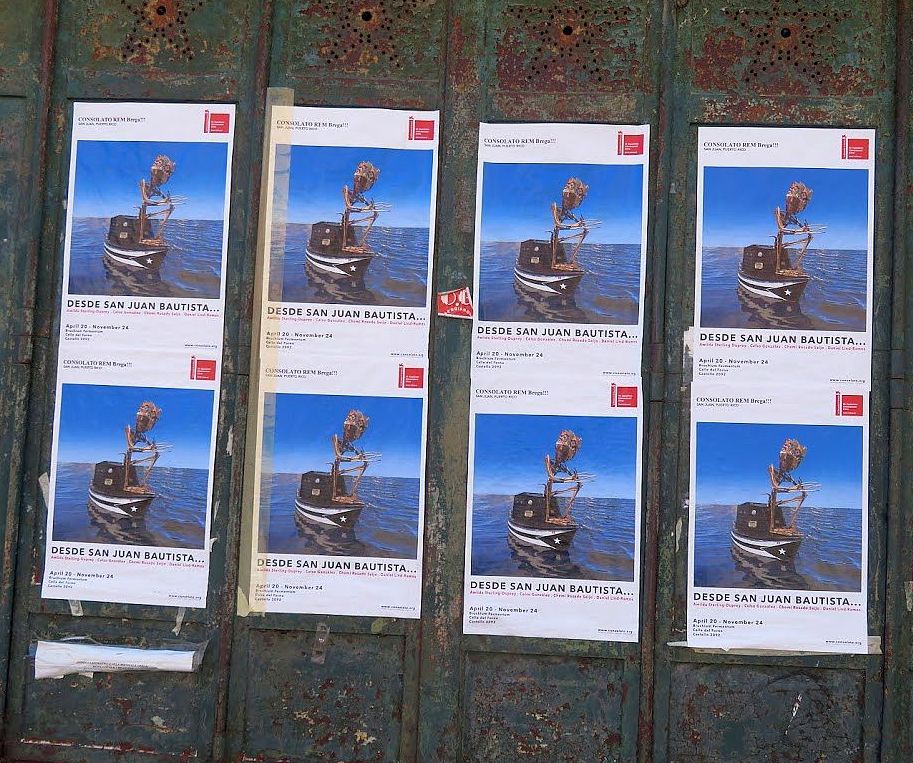
The Biennale has opened several weeks earlier than usual this year, and the inauguration was Saturday, April 20. What remained usual, however, was the mass of international art(s) journalists and assorted contributors that swarmed the streets of Castello for the three preceding days.
I usually enjoy seeing the exotic plumage of these migrating creatures, not to mention their extraordinary behavior, but this year netted little. A good friend told me he saw a person in the street wearing a toilet on his head and I’m really sorry I missed that. Lino’s father-in-law was a plumbing contractor and was occasionally seen around town carrying a toilet on his shoulder — clearly he didn’t realize the artistic potential in his humdrum little existence and its porcelain trappings. I suspect that supporting four children during a world war might have limited his frivolous side, if he had one.
But such a jape would only have appeared frivolous back then, when life was real and life was earnest. Whoever porta’d that potty the other day was doing it seriously. To what end, I can’t say, but everything at the Biennale is done with a degree of seriousness denser than black granite. Along with the art we get diatribes and philippics and harangues, and also sermons and lectures and platitudes. Lots of words that labor to obscure rather than illuminate. Speaking of art — I mean, words — I’m remembering this self-portrait by Salvator Rosa (1645):

Back to the bony statue on the boat. It has been moored alongside the fruit and vegetable boat at the bottom of via Garibaldi. It will be there till the Biennale closes in November.
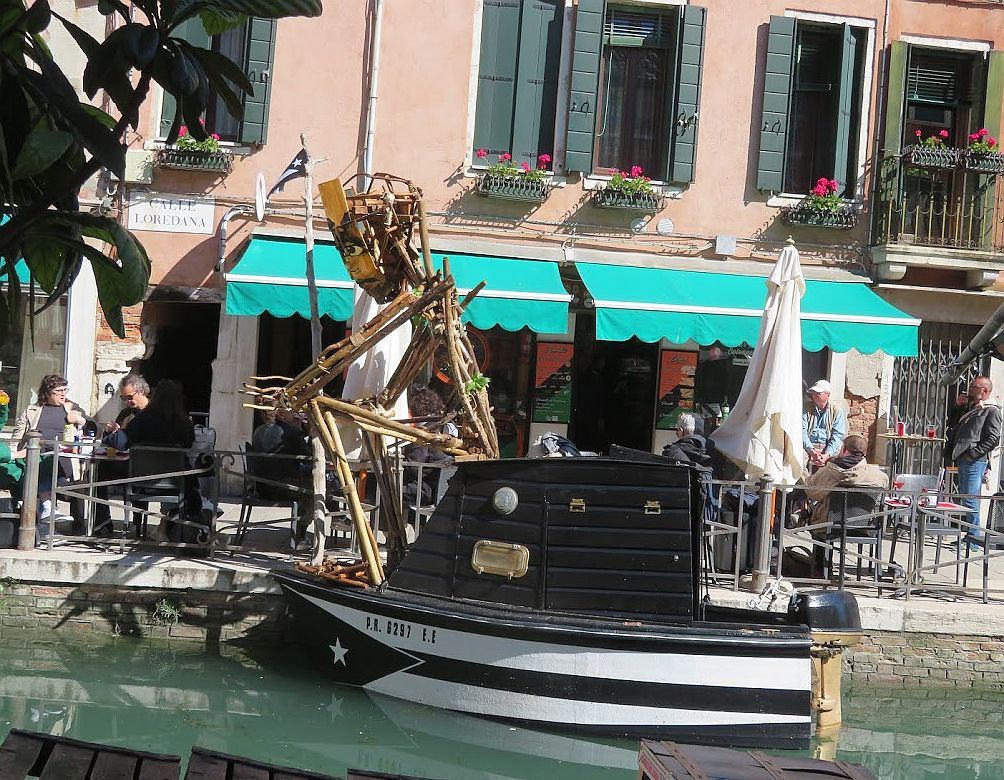
But if you desire meaning, maybe the following will help:
At the heart of the exhibition stands Celso González’ monumental Yola Sculpture, “San Juan Bautista,” a powerful symbol of Puerto Rico’s enduring spirit. This site-specific installation challenges the constraints of its political status, whil honoring the Island’s rich maritime heritage.
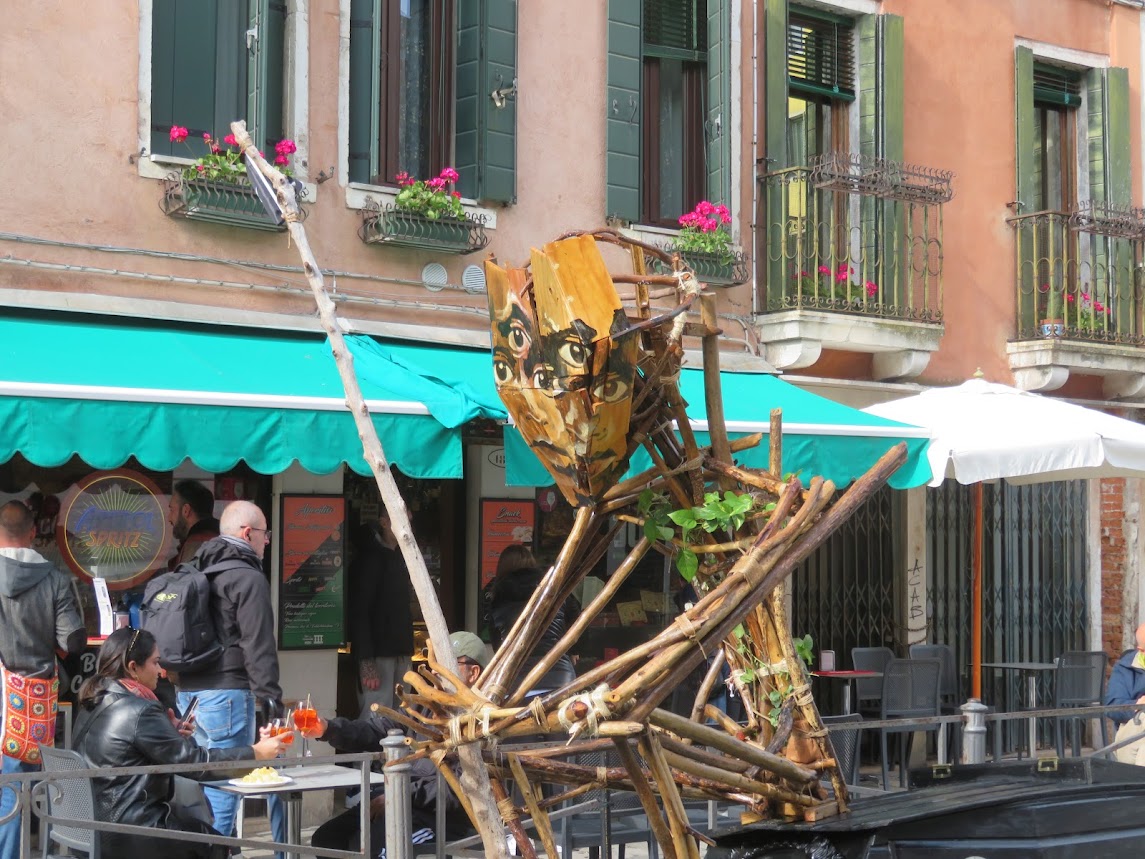
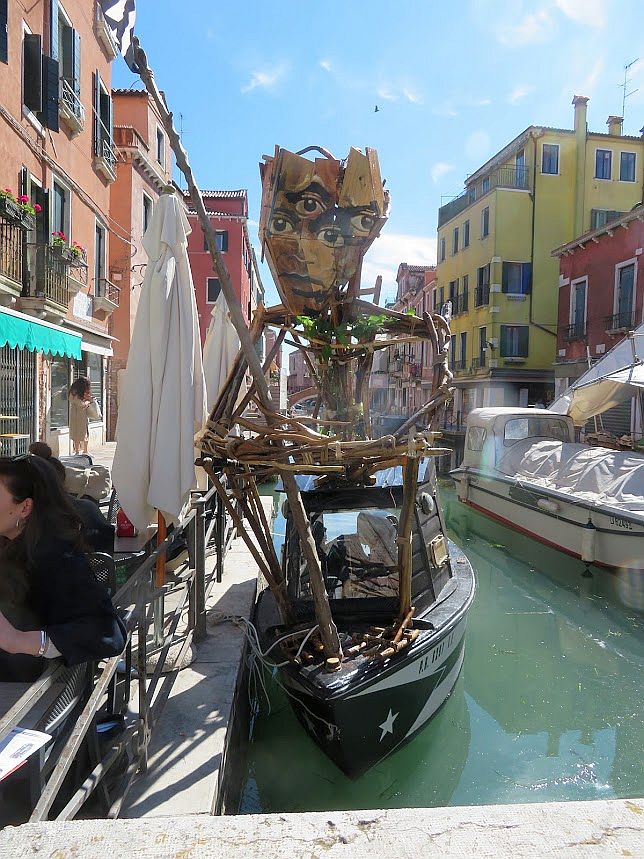

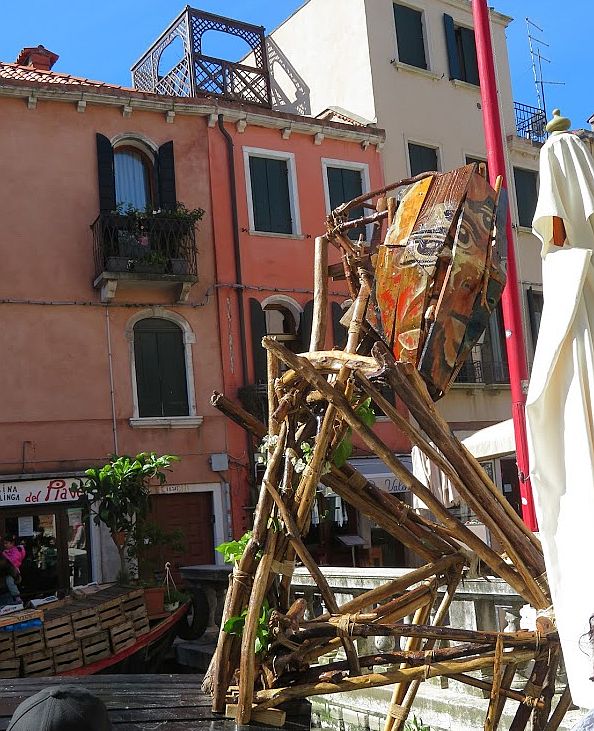
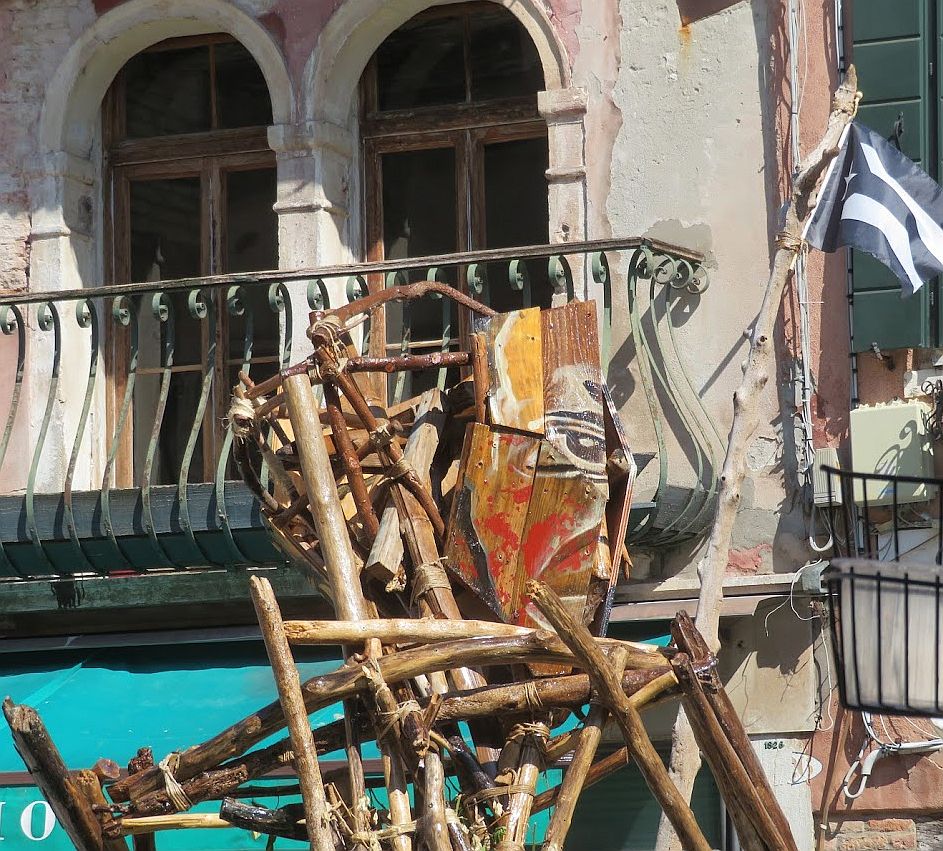
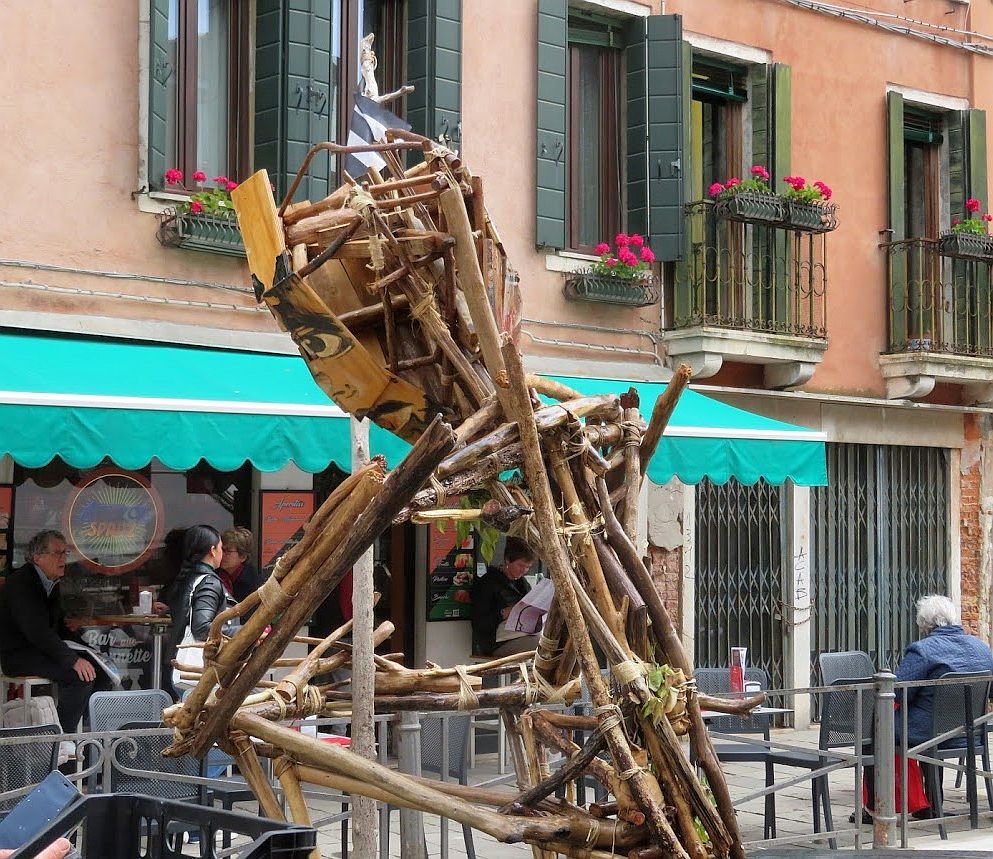
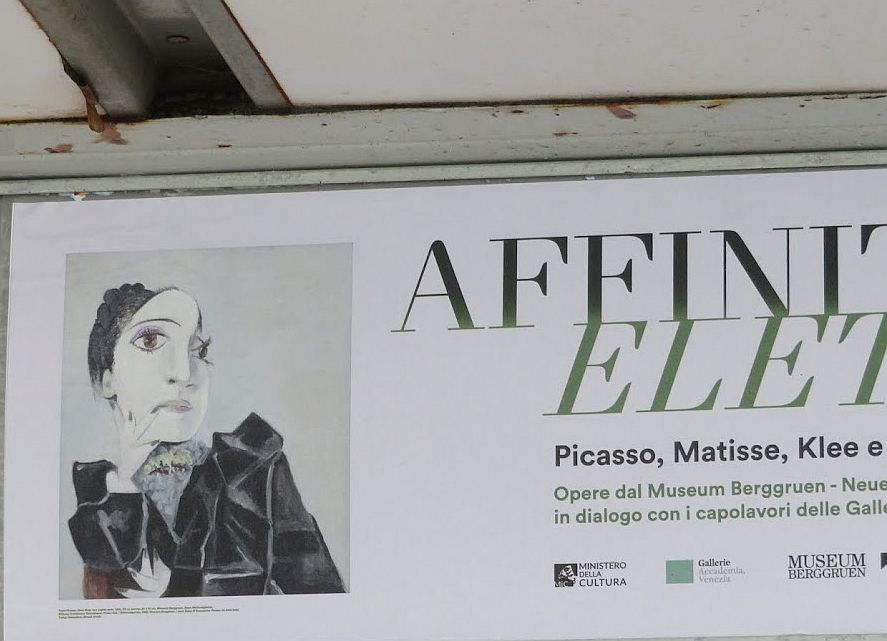
There have been boats at the Biennale before now. The water is evidently an element that helps some projects seem more interesting. Or important.
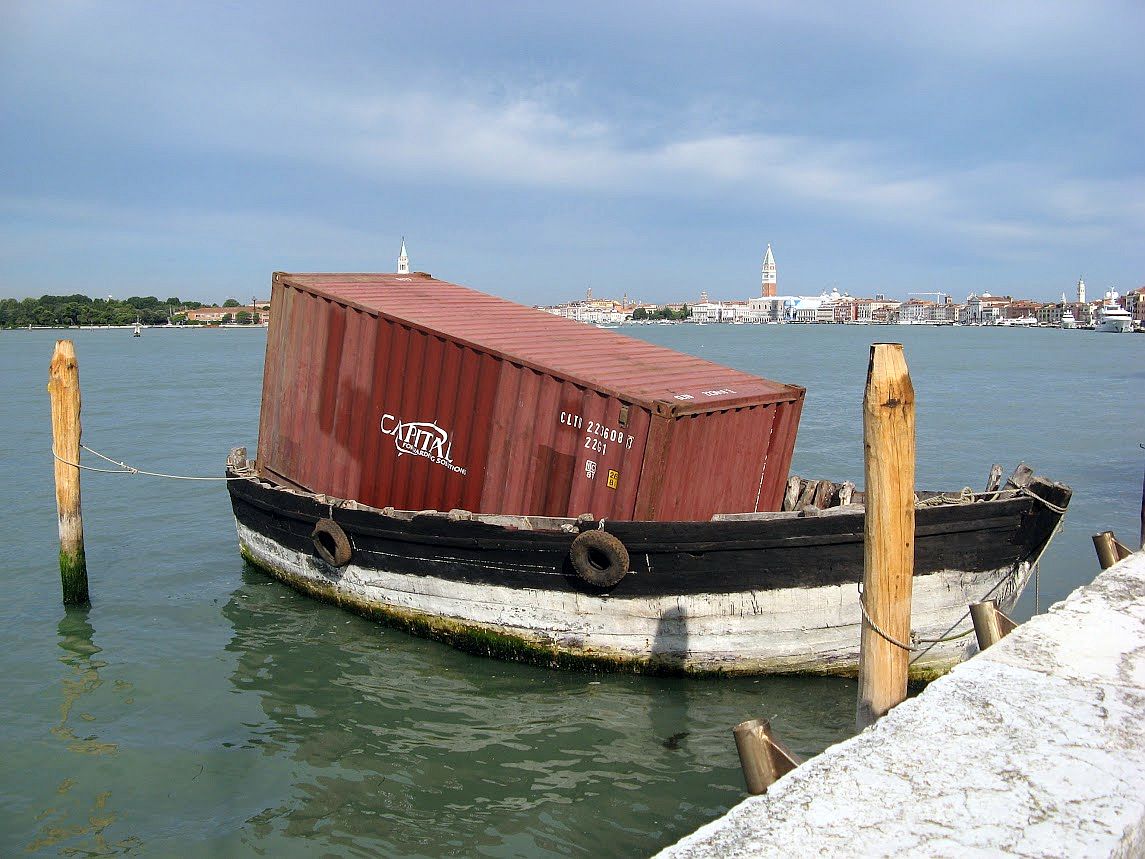
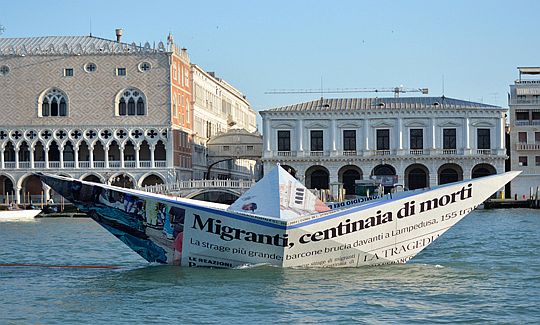
Vik Muniz’s floating installation Lampedusa was launched during the 56th Venice Biennale in 2015. The article published in the Haifa Museum of Art publication stated that “the 14-meter-long (45 feet) paper boat was coated with a giant reproduction of the Italian newspaper that reported the tragedy. The gargantuan paper boat drifted along the Canal Grande, Venice’s main transportation route, docking near luxury yachts. As art critic Jonathan Jones wrote in The Guardian, “This art project has been overtaken by real-life horror. Perhaps, in theory, it seemed reasonable to make a vaguely thought-provoking, ‘playful’ piece about migration. But now the scale of our cruelty, the true consequences of all the rhetoric that dehumanises migrants, have become so lethally clear. Surely, art on such a theme should be less equivocal, more angry.”
Well said, Mr. Jones. But this is the Biennale, where scruples find little nourishment.
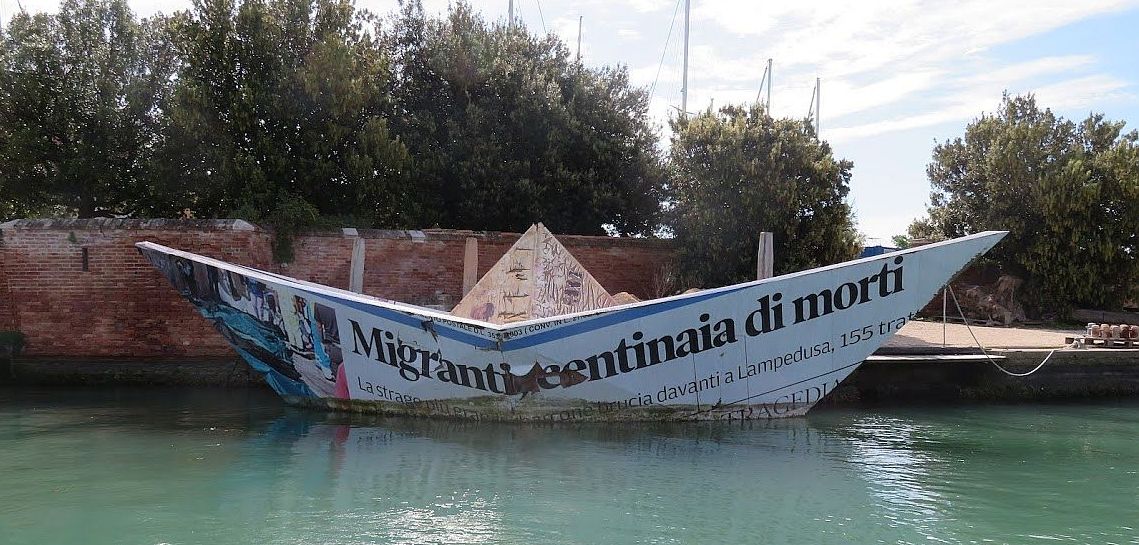

I’m going to go back to floating St. John. Despite not being any closer to resolving urgent questions of urban injustice or the coloniality of power, I’m starting to feel that we understand each other.

